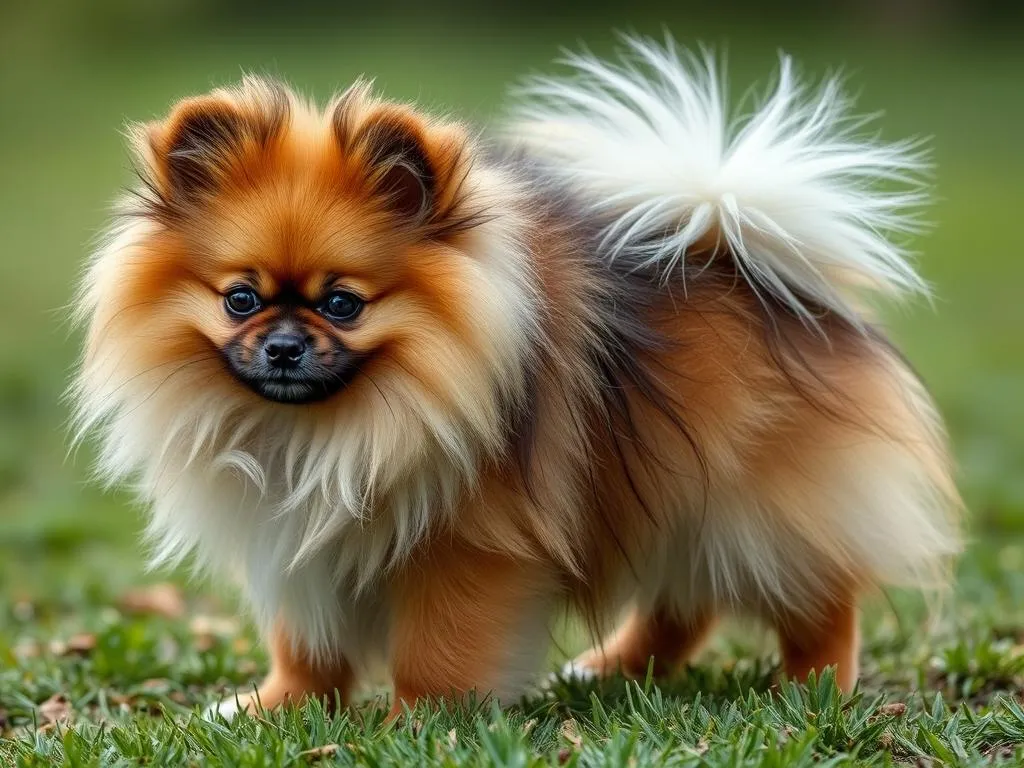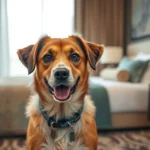
Introduction
Potty training is a crucial aspect of dog ownership, especially for small breeds like Pomeranians. These fluffy companions, with their lively dispositions and charming personalities, can present unique challenges during the training process. Many Pomeranian owners struggle with potty training due to the breed’s small size and stubbornness. However, with a well-structured approach, it is entirely possible to teach your Pomeranian good potty habits, leading to a more harmonious living environment and a happier pet.
A well-trained dog not only reduces stress for the owner but also enhances the bond between you and your furry friend. Let’s explore how to effectively potty train a Pomeranian through a step-by-step guide that addresses their unique needs.
Understanding the Pomeranian Breed
Characteristics of Pomeranians
Pomeranians are small dogs, typically weighing between 3 to 7 pounds and standing around 6 to 12 inches tall. Their fluffy double coat, which requires regular grooming, adds to their adorable appearance. Beyond their physical traits, Pomeranians are known for their vibrant and outgoing personalities. They are intelligent, curious, and often exhibit a playful demeanor, making them a joy to have around.
However, their small size can sometimes lead to challenges in potty training. Pomeranians may not always signal their need to go outside, and their mischievous nature can lead to accidents if they are not properly supervised. Understanding these characteristics is vital in developing effective potty training strategies.
Importance of Breed-Specific Training
Training methods can vary significantly depending on the breed, and Pomeranians are no exception. Unlike larger breeds, they may require different techniques to effectively communicate the need for potty breaks. Their high energy and intelligence can lead them to test boundaries, making it essential for owners to establish clear rules and routines.
Additionally, Pomeranians often have a tendency to hold their bladders for extended periods, which can lead to accidents if their needs are not met promptly. Recognizing these behavioral traits will aid in creating a successful potty training plan tailored specifically for your Pomeranian.
Preparing for Potty Training
Supplies You Will Need
Before beginning the potty training process, it’s important to gather the necessary supplies. Here’s a list of recommended items:
- Potty pads: These can be useful for indoor training, especially for apartment dwellers.
- Crate: A crate can help with confinement and reinforce the idea that this is a safe space for your Pomeranian.
- Leash: A sturdy leash is essential for outdoor potty breaks.
- Training treats: Small, tasty rewards can motivate your dog and reinforce positive behavior.
- Clicker: If you’re using clicker training, having a clicker will help mark the desired behaviors.
Optional tools include odor-neutralizing cleaner for accidents and a designated outdoor potty area.
Choosing the Right Location
Selecting the right potty area is crucial for successful training. If you have a yard, designate a specific spot where your Pomeranian can relieve themselves. This will help them associate this area with potty breaks.
For apartment dwellers, consider using indoor grass patches or potty pads. Ensure these are placed in a consistent location, and encourage your Pomeranian to use them regularly. Consistency will help them understand where they are allowed to go.
The Potty Training Process
Establishing a Routine
Establishing a consistent routine is one of the most effective strategies for potty training your Pomeranian. Dogs thrive on routine, and having set times for feeding, potty breaks, and playtime will create a predictable environment.
A suggested daily potty training routine might include:
- Feeding: Feed your Pomeranian at the same times each day.
- Potty breaks: Take them outside immediately after meals, after waking up, and every couple of hours throughout the day.
- Playtime: Engage in play sessions to help expend energy, which can reduce the likelihood of indoor accidents.
Using Positive Reinforcement
Positive reinforcement is a powerful training technique that encourages desired behaviors through rewards. For potty training, every time your Pomeranian successfully goes outside or on their designated potty pad, reward them with praise or a small treat.
Types of rewards that work well for Pomeranians include:
- Verbal praise: Use an enthusiastic tone to celebrate their success.
- Treats: Small, tasty snacks can motivate your dog and reinforce good behavior.
- Playtime: After a successful potty break, engaging in a short play session can also serve as a reward.
Recognizing Signs of Need
Understanding your Pomeranian’s signals that they need to go outside is essential. Common signs include:
- Sniffing around or circling
- Whining or barking
- Scratching at the door
- Restlessness or pacing
When you notice these signs, respond promptly by taking your Pomeranian outside. This reinforces their understanding of the connection between the signals they give and the opportunity to relieve themselves.
Common Challenges and Solutions
Accidents in the House
Accidents are a common part of the potty training process, especially for Pomeranians. If your dog has an accident indoors, it’s important to remain calm and not punish them. Instead, clean the area thoroughly with an odor-neutralizing cleaner to prevent them from returning to the same spot.
Long-term strategies to reduce accidents include:
- Increasing the frequency of potty breaks, especially during the initial training phase.
- Monitoring your Pomeranian closely for signs of needing to go out.
- Reinforcing successful potty breaks with praise and treats.
Regression in Training
Sometimes, even after successful potty training, you may experience regression. This can occur due to various reasons, such as changes in routine, stress, or health issues.
To overcome setbacks, consider the following tips:
- Review your routine: Ensure you’re maintaining consistent potty breaks.
- Be patient: Understand that regressions can happen, and it may take time to get back on track.
- Consult a veterinarian if you suspect health issues are affecting your dog’s ability to hold it.
Dealing with Fear or Anxiety
Some Pomeranians may exhibit fear or anxiety during potty training, which can hinder their progress. Signs of anxiety may include cowering, refusing to go outside, or excessive barking.
To alleviate fear and build confidence:
- Create a positive environment: Use treats and praise to create a safe and encouraging atmosphere.
- Gradually acclimate them to outdoor environments, starting with short visits and slowly increasing the duration.
- Consider using a calming aid, such as a pheromone diffuser, to help reduce anxiety levels.
Long-Term Maintenance and Habits
Continuing the Routine
Once your Pomeranian is successfully potty trained, it’s important to maintain a consistent potty schedule. This includes continuing to take them out at regular intervals, especially after meals and play sessions.
Reinforcing good habits as your Pomeranian matures will solidify their training. Consistency is key to ensuring they don’t revert to old habits.
Transitioning from Puppy Training to Adult Training
As your Pomeranian grows, their training needs may change. Adult dogs may have different potty needs, such as longer intervals between breaks, but it’s essential to continue reinforcing the training you established as a puppy.
To maintain potty training success in adulthood, consider:
- Adjusting the potty schedule based on your dog’s age and activity level.
- Continuing to use positive reinforcement to encourage good habits.
- Being attentive to any changes in behavior that may indicate changes in their potty needs.
Professional Help and Resources
When to Seek Professional Training
If you find yourself struggling despite your best efforts, it may be time to consult a professional trainer or behaviorist. Signs that you may need professional help include:
- Persistent accidents in the house despite consistent training.
- Behavioral issues that interfere with training progress.
- Signs of extreme anxiety or fear that hinder your Pomeranian’s ability to potty train.
Recommended Resources
There are numerous resources available to assist you in your potty training journey. Books, websites, and videos can provide additional techniques and insights. Local training classes and support groups can also offer valuable guidance and community support.
Conclusion
Potty training a Pomeranian may present its challenges, but with patience, consistency, and the right techniques, you can successfully teach your furry friend to relieve themselves in appropriate places. Understanding the unique characteristics of the Pomeranian breed and tailoring your approach accordingly will yield the best results.
Remember that persistence is key. Every dog is different, and your Pomeranian may require a bit more time to fully grasp the concept of potty training. The bond you form through this process is invaluable, and the joy of having a well-trained Pomeranian is well worth the effort. Keep encouraging and celebrating their successes along the way, and you’ll set the stage for a happy and harmonious life together.









